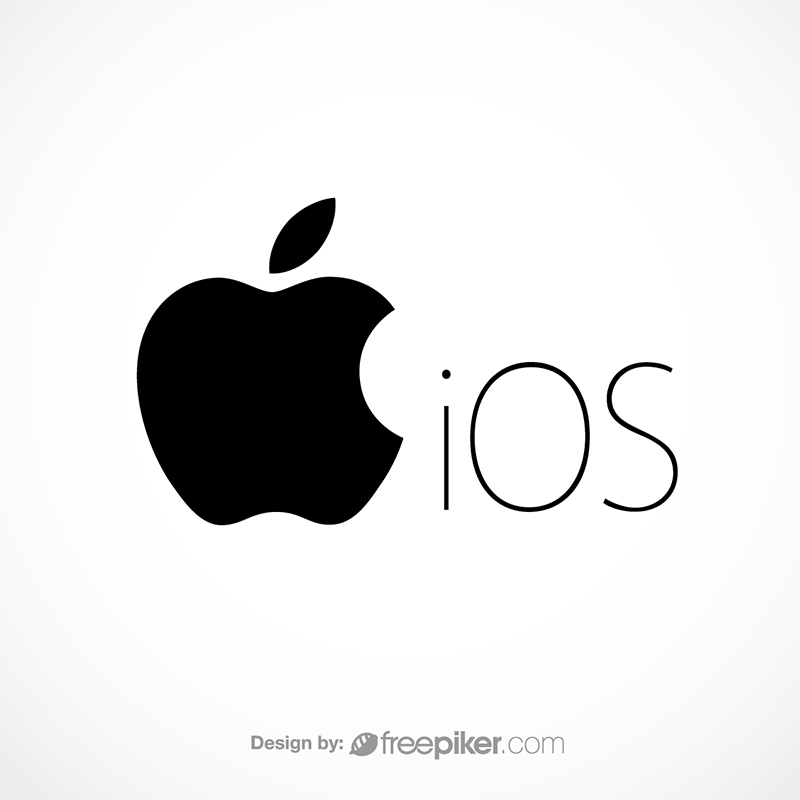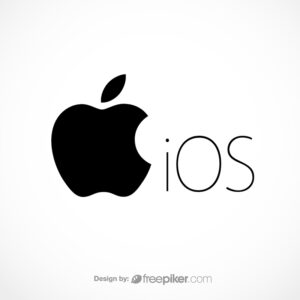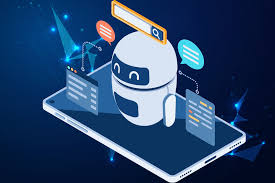
[ad_1]
As the landscape of mobile technology continues to evolve, the future of iOS apps presents exciting possibilities. Apple remains at the forefront with its continuous innovation, ensuring that developers and users alike have access to advanced features that enhance productivity, efficiency, and creativity. In this article, we will delve deep into the latest innovations and trends shaping iOS apps, exploring what developers and users can expect in the coming years.
1. Introduction
The world of iOS apps is multidimensional, influenced significantly by advancements in technology, changing user preferences, and evolving market landscapes. With over 1.8 million apps available on the Apple App Store, the competition among developers is fierce. Understanding the future of iOS apps means closely examining innovations, trends, and challenges that will shape app development in the years to come.
2. The Evolution of iOS Apps
Since the launch of the App Store in 2008, iOS apps have undergone tremendous changes. The early days were marked by simple applications, primarily games and social media. With every iOS update, developers have leveraged new technologies, design paradigms, and user behaviors to enhance the app experience.
As we step into a new era of digital interaction, iOS apps are poised to undergo further transformation. The combination of smartphone capabilities, progressive web applications, and sophisticated cloud computing has made it possible to provide seamless user experiences in real-time.
3. Key Innovations in iOS Apps
3.1 Focus on Augmented Reality (AR)
One of the most compelling innovations in iOS apps is the integration of Augmented Reality (AR). Apple’s ARKit makes it easier than ever for developers to create immersive and interactive experiences. From gaming to education and retail, AR holds the potential to transform how users interact with the digital world.
-
- Applications in Retail: Brands like IKEA use AR to allow customers to visualize how furniture items would look in their homes.
-
- Gaming: Titles like Pokémon Go have popularized AR, merging real-world environments with in-game elements.
3.2 Enhanced Machine Learning Capabilities
Another pivotal innovation shaping the future of iOS apps is enhanced machine learning capabilities. With the introduction of Core ML, developers can integrate powerful algorithms into their apps with relative ease. This opens the door for smarter applications that can adapt and learn from user behavior.
-
- Personalization: Apps can analyze user data to provide personalized experiences, recommendations, and insights.
-
- Natural Language Processing: Through the integration of machine learning, apps can understand and process natural language, enhancing user interactions.
3.3 The Rise of Subscription-Based Models
As the app economy matures, we are witnessing a significant shift towards subscription-based models. Developers realize that recurring revenue models offer more stability compared to one-time purchase patterns.
-
- Value Proposition: Users are more inclined to subscribe if they perceive continuous value in updates, new features, and customer support.
-
- Success Stories: Apps in various sectors, from fitness to productivity, have seen success with subscription models, leading to more funds for future development.
3.4 Advancements in App Privacy and Security
With increased scrutiny about user privacy and data security, iOS apps are expected to place a stronger emphasis on these aspects. Apple has introduced various features like ‘Sign in with Apple’ and App Tracking Transparency, allowing users greater control over their privacy.
-
- User Trust: Apps that prioritize and communicate their privacy features effectively stand to gain user trust, thus enhancing user retention.
-
- GDPR Compliance: Developers must ensure their apps comply with regulations like GDPR, further protecting user data.
4. Future Trends in iOS App Development
4.1 Cross-Platform Development
The emergence of cross-platform development tools like Flutter and React Native has changed the dynamics of iOS app development. Developers now have the opportunity to build apps that run on multiple platforms without sacrificing performance or user experience.
-
- Cost-Effectiveness: Businesses can save time and resources by using a single codebase for various platforms.
-
- Time to Market: Faster development means quicker deployment, allowing companies to respond to user needs rapidly.
4.2 Increased Integration with IoT
The Internet of Things (IoT) is another trend that will significantly impact iOS apps. As smart devices become more popular, applications capable of controlling and monitoring these devices will be in high demand.
-
- Home Automation: iOS apps can manage connected devices like lights, locks, and thermostats, enhancing the user experience through automation.
-
- Wearable Technology: iOS apps for wearable devices, such as the Apple Watch, will continue to grow, focusing on health monitoring and notifications.
4.3 5G Technology and Its Impact
The rollout of 5G technology is set to revolutionize mobile app performance, providing faster speeds and lower latency. This technology will impact all aspects of iOS apps, from their design to functionality.
-
- Enhanced Streaming: Apps that rely on streaming services, like gaming and video apps, will benefit from the reduced latency and improved bandwidth.
-
- Real-Time Capabilities: 5G opens up new possibilities for apps that require real-time data processing, such as live collaboration tools.
4.4 The Role of Artificial Intelligence
Artificial Intelligence (AI) continues to shape the future of iOS apps. From chatbots to predictive analytics, AI offers numerous ways for apps to enhance user experience.
-
- Smart Assistants: AI-driven personal assistants within apps can help users navigate tasks, set reminders, and manage schedules more effectively.
-
- User Engagement: AI can analyze user interactions and tailor notifications, making it easier for apps to re-engage users.
5. A Closer Look at App Design Trends
5.1 Minimalistic and User-Centric Designs
As users increasingly value simplicity and ease of use, minimalistic design will remain a central trend in iOS apps. Developers are focusing on intuitive user interfaces that offer seamless navigation.
-
- Focus on Functionality: Essential features must be easy to access, ensuring users can achieve their goals without distractions.
-
- Customization: Users appreciate apps that allow them to customize their experience, such as adjusting layouts, themes, and features.
5.2 Dark Mode and Visual Customization
The popularity of dark mode is a significant trend influencing iOS app design. Dark mode not only enhances visual appeal but also reduces eye strain, especially in low-light environments.
-
- User Preferences: Apps that offer visual customization options cater to user preferences, increasing user satisfaction.
-
- Brand Identity: Dark mode can also align with branding strategies, allowing businesses to create a cohesive visual identity across platforms.
5.3 Adaptive User Interfaces
With a plethora of devices and screen sizes, adaptive user interfaces will be key to maximizing user experience. iOS apps must be flexible enough to provide a consistent experience across various devices.
-
- Dynamic Layouts: Designers need to create flexible layouts that automatically adjust based on screen size and orientation.
-
- Contextual Design: Adaptive interfaces should also consider user context, providing different experiences based on location or usage time.
6. Challenges Ahead for iOS Developers
While the future of iOS apps is bright, challenges remain for developers.
6.1 App Store Competition
With millions of apps available, standing out in the highly competitive App Store will require innovative marketing strategies and unique value propositions.
6.2 Compliance Issues
Navigating privacy regulations and compliance concerns can be complex. Developers must stay informed about evolving laws and frameworks.
6.3 Rapid Technological Advancements
Keeping pace with constant technological advancements demands continuous learning and adaptation from developers. This can be overwhelming but is essential for staying relevant.
7. Conclusion
The future of iOS apps is paved with immense opportunities driven by innovation and emerging trends. As developers adapt to changes in technology and user behavior, focusing on user-centric design principles, enhanced functionality, and integrating advanced technologies like AR, AI, and machine learning will be critical. The challenges of competition, compliance, and rapid changes will require resilience and creativity.
By embracing these innovations and trends, the next generation of iOS apps can unlock extraordinary potential, ultimately transforming how users interact with technology.
FAQs
Q1: What are some of the key innovations expected in iOS apps?
Key innovations include enhanced AR experiences, advanced machine learning capabilities, subscription-based revenue models, and stronger app privacy and security measures.
Q2: How will 5G technology affect iOS apps?
5G technology will enhance app performance, allowing for faster loading times, improved streaming capabilities, and real-time interactions.
Q3: What role does artificial intelligence play in the future of iOS apps?
AI will help create smart assistants, personalize user experiences, and drive predictive analytics within apps, enhancing user engagement.
Q4: What design trends should developers focus on?
Developers should consider minimalistic and user-centric designs, dark mode integration, and adaptive user interfaces to cater to diverse devices.
Q5: What challenges do iOS developers face in the future?
Developers will face challenges like App Store competition, compliance regulations, and the need to adapt to rapid technological advancements.
Q6: Why should companies consider subscription-based models for their apps?
Subscription-based models provide a steady revenue stream and incentivize continuous improvements, offering users ongoing value that encourages retention.
[ad_2]






